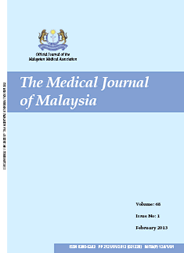MJM, Vol 70 Supplement 1 September 2015
Pregnancy-related Burden of Disease in Malaysia: A
comparison between 2000 and 2008
Centre for Burden of Disease Research, Institute for Public Health, Ministry of Health Malaysia
ABSTRACT
Introduction: It was estimated that approximately 529,000 women died from pregnancy-related complications every year and majority of these deaths were from developing countries. Pregnancy-related issues were one of the components included in the Malaysian Burden of Disease Study, which was conducted for the years 2000 and 2008. This study focused on the comparison between pregnancy-related burdens in terms of premature mortality, morbidity and overall disability adjusted in both years.
Method: Methods developed by the World Health Organization (WHO) for the Global Burden of Disease Study were applied to calculate the burden of disease in terms of Years of Life Lost (YLL) due to premature mortality, Years Lived with Disability (YLD) and overall Disability Adjusted Life Years (DALYs). Population and mortality data provided by the Statistics Department and data from hospital admissions were used for the morbidity data.
Results: There was almost 50% increase in the overall burden of pregnancy-related diseases in 2008 as compared to 2000. This increasing trend was largely contributed by abortion compared to other causes. Only obstructed labour showed a decreasing trend. Maternal haemorrhage was the primary cause of premature mortality (YLL) for both years whereas the leading cause of morbidity (YLD) was abortion.
Conclusion: Although maternal mortality rate had decreased from 2000 to 2008, the disability burden resulting from pregnancy-related diseases was on the rise especially abortion. Morbidities from abortions have now been thrust into spotlight. Recommendations include disseminating information to women and their families on the importance of prenatal care, signs of pregnancy-related complications, and post-delivery
